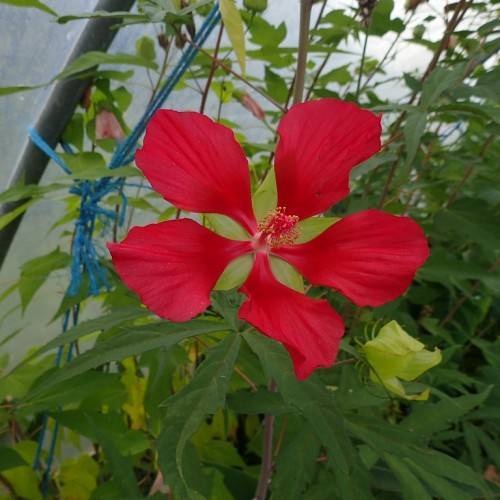
scarlet rose mallow
Hibiscus coccineus
Cycle:
Herbaceous Perennial
Watering:
Average
Hardiness Zone:
6 - 9
Flowers:
Flowers
Sun:
full sun,part shade
Leaf:
Yes
Growth Rate:
High
Maintenance:
Moderate
Drought Tolerant:
Yes
Salt Tolerant:
Yes
Thorny:
Yes
Invasive:
Yes
Tropical:
Yes
Care Level:
Medium
watering
Scarlet rose mallow requires moderate amounts of water. Water the plant once a week for about 10 to 15 minutes to make sure the soil is moist. Reduce the frequency of watering during winter since the plant is dormant and requires lesser amounts of water. In very hot climates, provide the plant with extra water, making sure the soil is always moist.
sunlight
Scarlet rose mallow prefers full sun, meaning that they should get direct sunlight for most of the day, generally 6 to 8 hours or more. The best times to provide this sunlight will be in the early morning and late afternoon when the intensity of the sunlight is lower and not as hot. During the peak of the summer season, when the sun is at its most intense, try to provide them with some afternoon shade to protect the plant from sunburn or scorching.
pruning
Pruning scarlet rose mallow (Hibiscus coccineus) plants should generally begin in early spring before the new growth starts to emerge. Prune lightly to maintain a desired size and shape, and to remove any dead or damaged stems. Remove no more than 1-third of the stems at the same time to reduce shock and ensure vigorous re-growth. Rearrange any cages or stakes to accommodate expected growth. Monitor the growth during the summer months, and give any larger plants second, light pruning if necessary. This should be done in early fall before the first frost. Prune away any dead or damaged stems and then lightly trim the plant to size. Always use sharp pruning shears and clean them with rubbing alcohol or a bleach solution between uses.
